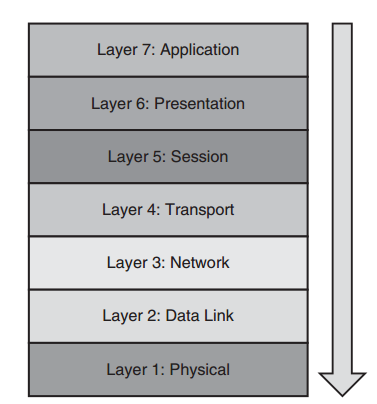CCNP TSHOOT FAQ: Introduction to Troubleshooting Processes
Q1. Identify the three steps in a simplified troubleshooting model. (Choose three.)
a. Problem replication
b. Problem diagnosis
c. Problem resolution
d. Problem report
Q2. Experienced troubleshooters with in-depth comprehension of a particular network might skip the examine information and eliminate potential causes steps in a structured troubleshooting model, instead relying on their own insight to determine the
most likely cause of a problem. This illustrates what approach to network troubleshooting?
a. Ad hoc
b. Shoot from the hip
c. Crystal ball
d. Independent path
Q3. Which of the following troubleshooting models requires access to a specific application?
a. Bottom-up
b. Divide and conquer
c. Comparing configurations
d. Top-down
Q4. Based on your analysis of a problem report and the data collected, you want to use a troubleshooting model that can quickly eliminate multiple layers of the OSI model a potential sources of the reported problem. Which of the following troubleshooting methods would be most appropriate?
a. Following the traffic path
b. Bottom-up
c. Top-down
d. Component swapping
Q5. Which of the following is the best statement to include in a problem report?
a. The network is broken.
b. User A cannot reach the network.
c. User B recently changed his PC’s operating system to Microsoft Windows 7.
d. User C is unable to attach to an internal share resource of \\10.1.1.1\Budget,
although he can print to all network printers, and he can reach the Internet.
Q6. What troubleshooting step should you perform after a problem has been reported and clearly defined?
a. Hypothesize underlying cause
b. Collect information
c. Eliminate potential causes
d. Examine collected information
Q7. What are the two primary goals of troubleshooters as they are collecting information? (Choose two answers.)
a. Eliminate potential causes from consideration.
b. Identify indicators pointing to the underlying cause of the problem.
c. Hypothesize the most likely cause for a problem.
d. Find evidence that can be used to eliminate potential causes.
Q8. When performing the eliminate potential causes troubleshooting step, which caution should the troubleshooter be aware of?
a. The danger of drawing an invalid conclusion from the observed data
b. The danger of troubleshooting a network component over which the troubleshooter does not have authority
c. The danger of causing disruptions in workflow by implementing the proposed solution
d. The danger of creating a new problem by implementing the proposed solution
Q9. A troubleshooter is hypothesizing a cause for an urgent problem, and her hypothesis involves a network device that she is not authorized to configure. The person who is authorized to configure the network device is unavailable. What should the troubleshooter do?
a. Wait for authorized personnel to address the issue.
b. Attempt to find a temporary workaround for the issue.
c. Override corporate policy, based on the urgency, and configure the network device independently because authorized personnel are not currently available.
d. Instruct the user to report the problem to the proper department that is authorized to resolve the issue.
Q10. What are two reasons why troubleshooters should document their steps as they attempt to verify their hypothesis? (Choose the two best answers.)
a. The steps can be submitted to the proper authority prior to their implementation.
b. The steps serve as a rollback plan if the attempted solution does not resolve the problem.
c. The steps help ensure the troubleshooters do not skip a step in their solution.
d. The steps help reduce duplication of efforts.
Q11. What two steps should be taken after a problem has been resolved? (Choose two answers.)
a. For consistency, the same configuration should be implemented on all equipment of the same type.
b. To accidentally prevent their reuse, previously archived configurations of the repaired device should be deleted from the archive server.
c. Confirm that the user who reported the problem agrees that the problem is resolved.
d. Make sure the implemented solution is integrated into the network’s routine maintenance model.
Q12. What is the ideal relationship between network maintenance and troubleshooting?
a. Networking maintenance and troubleshooting efforts should be isolated from one another.
b. Networking maintenance and troubleshooting efforts should complement one another.
c. Networking maintenance and troubleshooting efforts should be conducted by different personnel.
d. Networking maintenance is a subset of network troubleshooting.
Q13. Which three of the following suggestions can best help troubleshooters keep in mind the need to document their steps? (Choose three.)
a. Require documentation.
b. Routinely back up documentation.
c. Schedule documentation checks.
d. Automate documentation.
Q14. What command can you use to display a router’s CPU utilization averages?
a. show processes cpu
b. show cpu processes
c. show cpu util
d. show util cpu
Q15. Which three troubleshooting phases require clear communication with end users? (Choose three answers.)
a. Problem report
b. Information collection
c. Hypothesis verification
d. Problem resolution
Q16. What are two elements of a change management system? (Choose two answers.)
a. Determine when changes can be made.
b. Determine potential causes for the problem requiring the change.
c. Determine who can authorize a change.
d. Determine what change should be made.
More Resources
